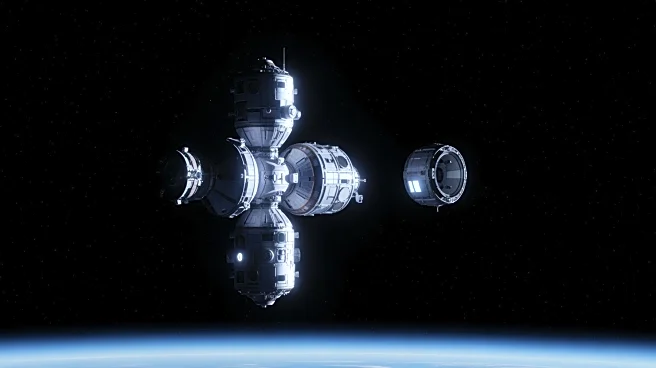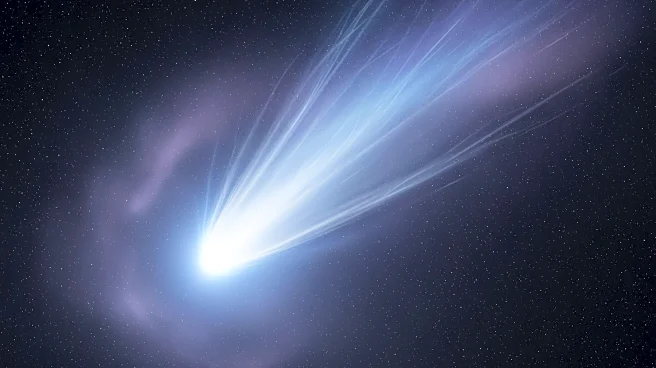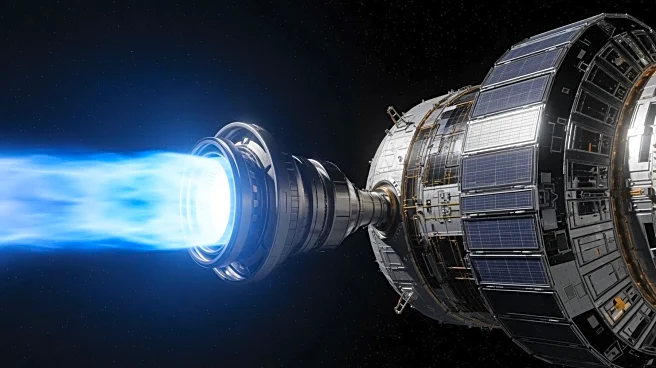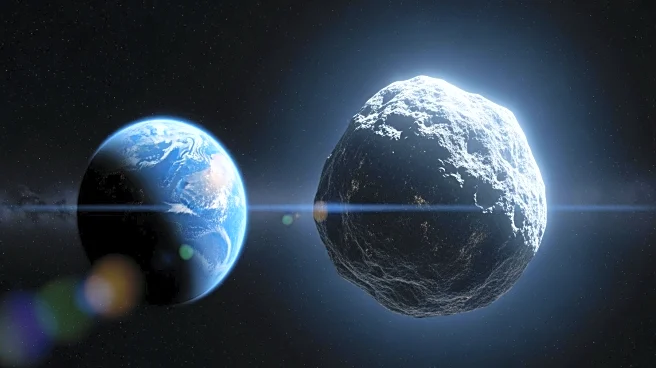What's Happening?
The China Manned Space Agency (CMSA) is dealing with a significant issue as astronauts aboard the Tiangong space station are currently without a return vehicle. The Shenzhou-20 spacecraft, which was supposed to facilitate their return to Earth, sustained
damage likely due to space debris, resulting in 'tiny cracks' in the return capsule's viewport window. Consequently, the Shenzhou-20 crew had to return home using the Shenzhou-21 shuttle, which had delivered their replacements. This situation leaves the new crew without a usable spacecraft for emergencies or scheduled returns. The CMSA has stated that the Shenzhou-20 does not meet safety requirements for a return trip, and the next mission, Shenzhou-22, will be launched at an appropriate time in the future. The damaged Shenzhou-20 capsule will remain docked to the Tiangong to continue conducting experiments.
Why It's Important?
This development underscores the risks associated with space exploration, particularly the threat posed by space debris. The inability to provide a safe return vehicle for astronauts highlights the vulnerabilities in current space mission planning and execution. The situation is reminiscent of past incidents, such as NASA astronauts being stranded due to technical issues. The CMSA's handling of this situation will be crucial in ensuring the safety of astronauts and maintaining the operational integrity of the Tiangong space station. The incident may prompt international discussions on improving safety protocols and debris management in space, impacting future collaborations and policies in space exploration.
What's Next?
The CMSA plans to launch the Shenzhou-22 mission at an appropriate time, which will be critical in resolving the current predicament. The timing of this launch will be pivotal, as it needs to ensure the safe return of the current crew and maintain the station's operational capabilities. The agency will likely focus on enhancing safety measures and preparing the Shenzhou-22 for a secure and efficient operation. Additionally, the damaged Shenzhou-20 capsule will continue to be used for experiments, which may provide insights into handling similar situations in the future.
Beyond the Headlines
The incident raises broader questions about the sustainability and safety of long-term space missions. As space exploration becomes more frequent, the accumulation of space debris poses increasing risks to spacecraft and astronauts. This situation may lead to heightened efforts in international cooperation to address space debris and improve safety standards. Furthermore, the ethical considerations of sending astronauts into potentially hazardous environments without guaranteed safe return options may become a focal point in future space policy discussions.













